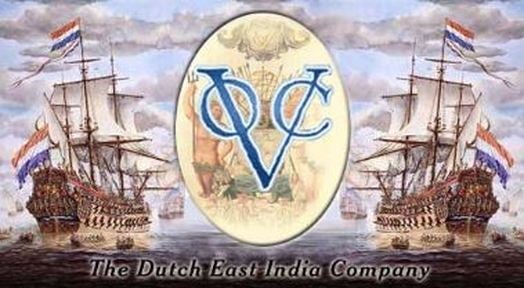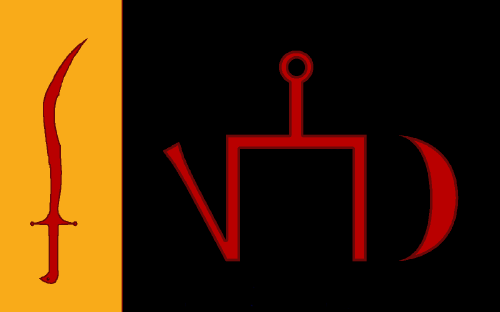| National Factbook |
| Flag: |

|
| Nation Name: |
Veyshnoria |
| Leader Name: |
Wulfharth |
| Currency: |

Blood |
| National Animal: |

Bald eagle |
| History: |
Veyshnoria (Veyshnorian Russian: ВейшнориÑ), officially the Socialist Republic of Veyshnoria, is a single-party socialist republic, governed by the Veyshnorian Communist Party (Russian: вейшнориÑнÑÐºÐ°Ñ ÐºÐ¾Ð¼Ð¼ÑƒÐ½Ð¸ÑтичеÑÐºÐ°Ñ Ð¿Ð°Ñ€Ñ‚Ð¸Ñ). Founded during the classified Veyshnorian Separation of 1977, Veyshnoria was originally an unknown Soviet colony state in northern South America. The state began to fully function as an autonomous socialist republic on December 19th, 1977. The state hosts a large number of former Soviet citizens which largely arrived after the dissolution of the Soviet Union. Due to this, much of the population in Veyshnoria is of Russian descent.
Although much of Veyshnoria's history is unknown as files pertaining to its pre-separation history were lost after the Veyshnorian Separation of 1977, post-separation events are well documented and handled by the State Archive of Veyshnoria.
Veyshnoria was a secret Soviet colony established some time in the 1950's under Iosif Stalin, in order to give the Soviet Union a base of operations to support communist revolutionaries in South America during the Cold War.
The Veyshnorian Separation of 1977 occurred in the period of stagnation in the Soviet Union, under Leonid Brezhnev. As the economy dipped into stagnation, Veyshnorians became increasingly unhappy with the state of affairs in Veyshnoria under the leadership of Brezhnev.
On December 5th, 1977, Yuri Koshkin Tupikov, leader of the Veyshnorian Insurgent Alliance (Russian: вейшнориÑнÑÐºÐ°Ñ Ð¿Ð¾Ð²ÑтанчеÑÐºÐ°Ñ Ð°Ð»ÑŒÑнÑ), staged a coup in Kovagrad, seizing arms shipments in the shipyards, government facilities, and put the KGB Kovagrad office under siege.
After a prolonged two week conflict, all Soviet personnel was either driven out of Veyshnoria or executed.
After the separation of 1977, the Veyshnorian Communist Party reorganized the state, designating itself as the "vanguard of the proletariat", with newly elected Premier Yuri Tupikov as its leader. Since the separation, the industrial and agricultural sectors of the economy have been growing at a constant rate, fueled by the policies of self reliance and military first, set forth by Tupikov. |
| Geography |
| Continent: |
North America |
| Land Area: |
231,101.22 sq. km |
| Terrain: |
Veyshnoria's geography can be divided into three different regions; a fertile and low plain along the Atlantic coast where the majority of the population lives; an interior lowlands region to the south, consisting mostly of mountains that contain most of Veyshnoria's mineral deposits; and the rain forests to the west of the country.
There are seven major rivers that cut through the country into the Atlantic. These rivers provide Veyshnoria with the majority of its fresh water.
Some of Veyshnoria's tallest mountains are Mount Cheka (7,382 feet), Mount Voroshilovsk (7,199 feet), and Mount Kovagrad (4,806 feet). Veyshnoria's lowest valley is Stolitsa Valley, at -2417 feet. |
| Highest Peak: |
Mount Cheka,
2,250 meters
|
| Lowest Valley: |
Stolitsa Valley,
-737 meters
|
| Climate: |
The climate in Veyshnoria is maritime-tropical and quite hot and humid, moderated by winds from the east. There are two rainy seasons, the first being from April to early-August, the second being from late-October to early-January. |
| People & Society |
| Population: |
5,365,694 people |
| Demonym: |
Veyshnorian |
| Demonym Plural: |
Veyshnorians |
| Ethnic Groups: |
Veyshnorian - 21.3%
Russian - 44.8%
Latin American - 33.9% |
| Languages: |
Veyshnorian Russian - 73.0%
Russian - 22.9%
Other - 4.1% |
| Religions: |
Atheism - 75.6%
Liberation Theologism - 17.3%
Roman Catholocism - 7.1% |
| Health |
| Life Expectancy: |
81 years |
| Obesity: |
1.3% |
| Alcohol Users: |
12.7% |
| Tobacco Users: |
38.3% |
| Cannabis Users: |
0.7% |
| Hard Drug Users: |
0.1% |
| Economy |
| Description: |
The Veyshnorian economy is officially described by the Veyshnorian state as "Socialism with Veyshnorian Characteristics", a term formally enshrined in the Veyshnorian constitution at the 4th Congress of the Veyshnorian People's Assembly (VPA) in 1981.
The Veyshnorian state allows some foreign capitalist investment into the country, however with strict regulations. The foreign private sector constitutes 12% of national GDP. 27% of the economy consists of cooperative market enterprises, mostly based in the rural countryside, with some pockets of market enterprise in suburban areas. Comprising 61% of the economy, the state-owned sector continues to dominate the national economy. The state has a hand in production and investment, implemented through five-year-plans.
While constituting a large chunk of the GDP, foreign enterprises are not wholly controlled by foreign capitalist boards. From its conception, the permission of foreign investment was coupled with a strict policy of the establishment of Veyshnorian Communist Party committees in these foreign enterprises, which often, to the dismay of foreign capitalists, implement state policy instead of serving the interests of the foreign boards of the companies.
Foreign investment in cooperative market enterprises is capped at 30% for publicly traded companies, in order to maintain a strong Veyshnorian and proletarian presence in these enterprises.
While following production plans set forth by the Veyshnorian state, the majority of state-owned enterprises are controlled in part by worker committees, mandated by law, as of the 3rd Congress of the VPA. |
| Average Yearly Income: |
$154.36 |
| Gross Domestic Product (GDP): |
$7,399,303,541.00 |
| GDP per Capita: |
$1,379.00 |
| Gross National Income (GNI): |
$5,169,256,290.00 |
| Industries: |
Major industries in Veyshnoria include the shipbuilding, mining, and agricultural industries, which make up 87% of Veyshnorian exports. A small part of the economy also produces crude oil (4%), from the small oil reserves which were discovered off the coast of Veyshnoria in 1999. |
| Military |
| History: |
The Veyshnorian People's Armed Forces (VPAF) is both the official armed forces of the Veyshnorian Communist Party (VCP) as well as the Veyshnorian state. The three branches of the VPAF include the People's Army, the People's Air Force, and the People's Navy.
The VPAF is a volunteer-only military force, with only 0.03% of the Veyshnorian population enlisted. Its defense budget (as of 2032) is $1,291,500. It is under the command and supervision of the Veyshnorian Defense Commissariat (VDC), whose commander-in-chief is officially the acting Premier. |
| Soldiers: |
0 |
| Tanks: |
0 |
| Aircraft: |
0 |
| Ships: |
0 |
| Missiles: |
31 |
| Nuclear Weapons: |
1 |
| Last Updated: 10/04/2018 01:20 am |
























